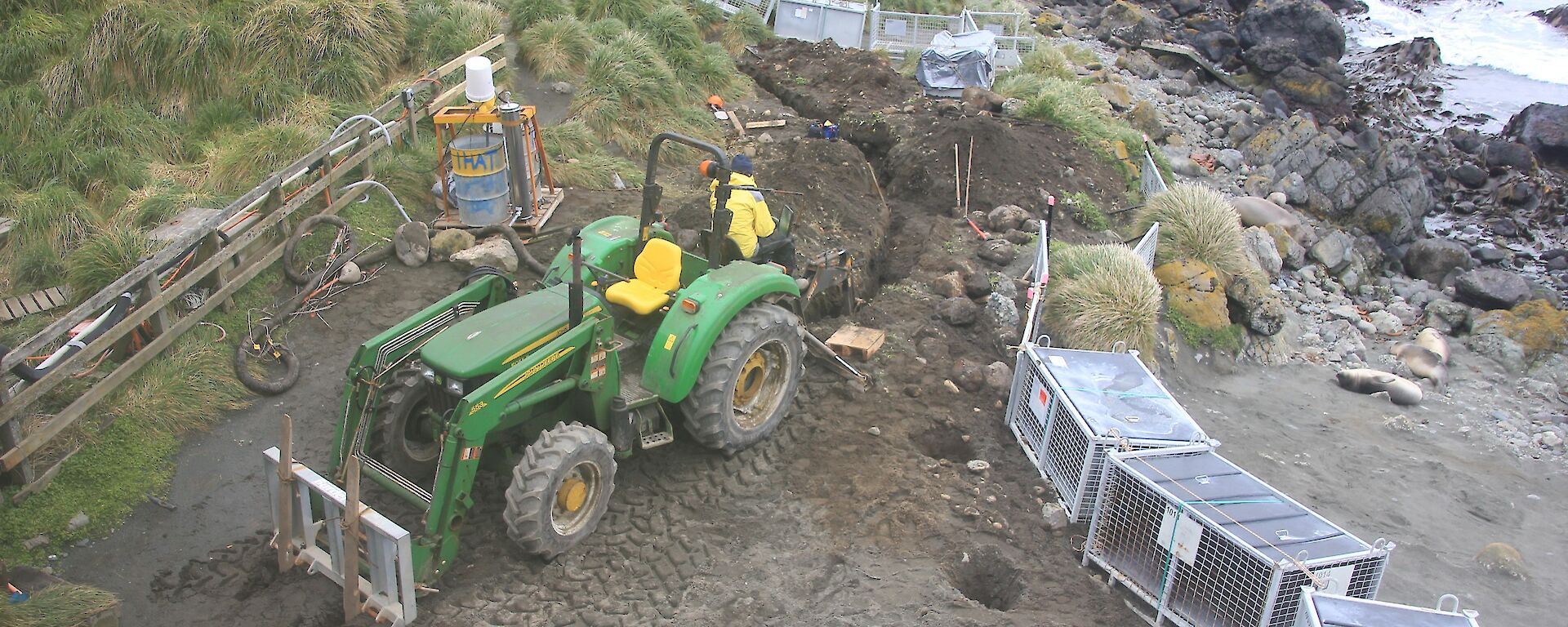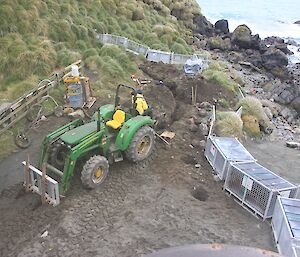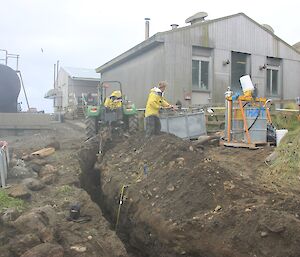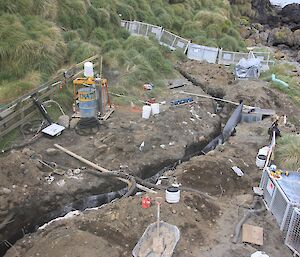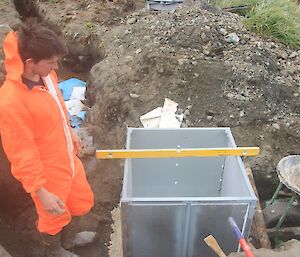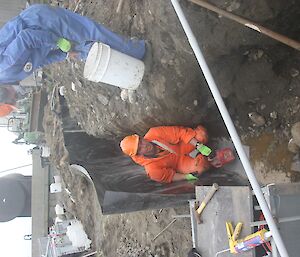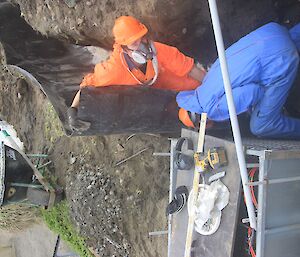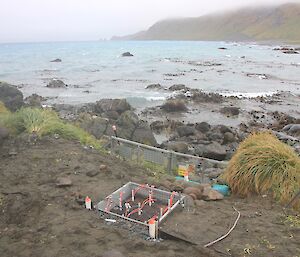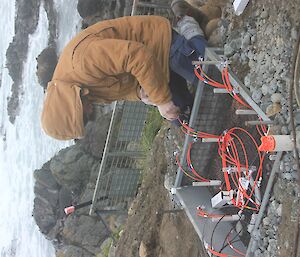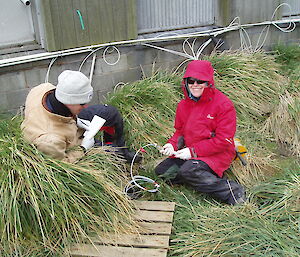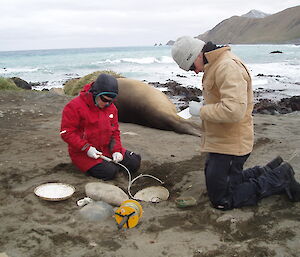Unfortunately, at times during the 66 years of station presence on the isthmus at Macquarie Island, fuel management practices have not been up to modern standards. Historic contamination of the soil around the isthmus has occurred as a result of spills, poor disposal practices, and storage leaks. This has resulted in a level of soil contamination with fuels and breakdown products around the isthmus which is unacceptable by modern standards.
One of the summer research projects at Macca is researching better methods of remediating these contaminated soils. The research team is comprised of the Australian Antarctic Division’s human impacts scientists Lisa and Robbie, University of Melbourne PhD student Ben, and summer tradesman Pat. Remediation methods under study include sparging pressurised air through the contaminated soil to encourage aerobic microbiological breakdown, and positioning in the ground of treatment membranes and filters to remove fuel residues from groundwater flows.
Fuel contamination poses a major threat to Antarctic and subantarctic ecosystems as fuel is persistent and potentially toxic in the environment. Natural attenuation in this environment is slow with intervention required to minimise environmental damage. In temperate regions a variety of remediation schemes are commonly used to clean up fuel spills. This research program began in 2000 to undertake research and modification for effective remediation in the Antarctic and subantarctic. This project will complete the final stage of implementation, risk assessment and monitoring of full scale remediation operations.
Ben has provided the following information about current research operations.
Remediation - Permeable Reactive Barriers for groundwater remediation in cold climates
During late November 2014, the remediation team on Macquarie Island were involved in the construction of three permeable reactive barriers (PRBs) that operate to capture and remove fuel from contaminated groundwater. In a PRB, contaminated groundwater flows through single or multiple compartments of reactive material, such as charcoal and zeolite, wherein the contaminants are filtered out by various chemical and biological processes. PRB construction was conducted south of the main power house to address a legacy of fuel spills in the nearshore zone.
Construction of the PRBs involved digging a 20 m long trench in which large high density plastic wings were installed to funnel groundwater to the PRBs. Water and PRB material sampling aims to address a number of research questions currently being investigated by researchers at the University of Melbourne and the Australian Antarctic Division. While PRBs have previously been installed at Australia’s Casey station, these barriers are the first to be installed at Macquarie Island.

